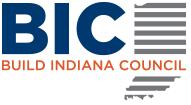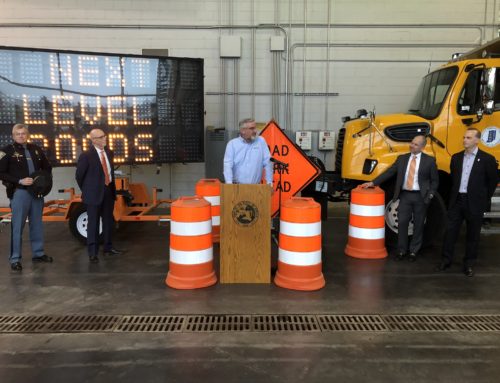The Build Indiana Council team recently attended the Transportation Construction Coalition (TCC) Fly-In in Washington, D.C.
The event with BIC’s federal partners served as a whirlwind, 36-hour trip to the nation’s capital and featured several productive conversations with the Hoosier Congressional delegation and federal/state transportation colleagues.
The BIC team highlighted the need for Indiana to maximize the discretionary dollars the state could receive from the bipartisan infrastructure law and also looked to the future as inflation, supply-chain issues and workforce needs continue to present their share of challenges to the road and bridge industry.
While the Infrastructure Investment and Jobs Act was just signed into law in November, its five-year lifespan will go quickly. In meetings with federal officials, it’s clear that conversations are already well underway on ways to beef up the current IIJA and improve federal infrastructure funding in its next iteration.
The trip came as the BIC team is closely monitoring the implementation of the federal infrastructure law to ensure Indiana can maximize its funding opportunities. BIC has long advocated for flexible funding streams, so road funds can go toward projects most needed by a community. The Infrastructure Investment and Jobs Act brings a welcomed and exciting influx of funding to infrastructure projects. One of BIC’s main goals is to share ways the IIJA can be strengthened to serve states in a way that best accomplishes their goals and needs.
Some of the items BIC shared with the Indiana delegation included:
- Increasing flexibility in program implementation: The IIJA increases to 12 the number of programs in which a state’s formula funding is divided. If a state doesn’t see a need for a certain program, the money must be returned to the federal government. BIC hopes future versions of the IIJA will allow for greater flexibility between programs.
- Discretionary dollars: The IIJA dramatically increases the amount of funding directed to discretionary dollars, which are divided out by federal grants. In FY22, this represents a 544% increase. Instead of discretionary dollars, BIC hopes a bulk of the funding returns to being distributed by formula.
- Empowering states to make their own decisions: Guidance released by the US DOT late last year gave the impression states were being discouraged to use IIJA funds for projects that increase highway capacity or focused on motorized transportation. BIC’s hope is that Indiana’s Congressional delegation will work with US DOT leaders to ensure the purpose and intent of the IIJA remains intact.
Please feel free to reach out to BIC Executive Director Brian Gould bgould@buildindianacouncil.org for additional information on the trip.


